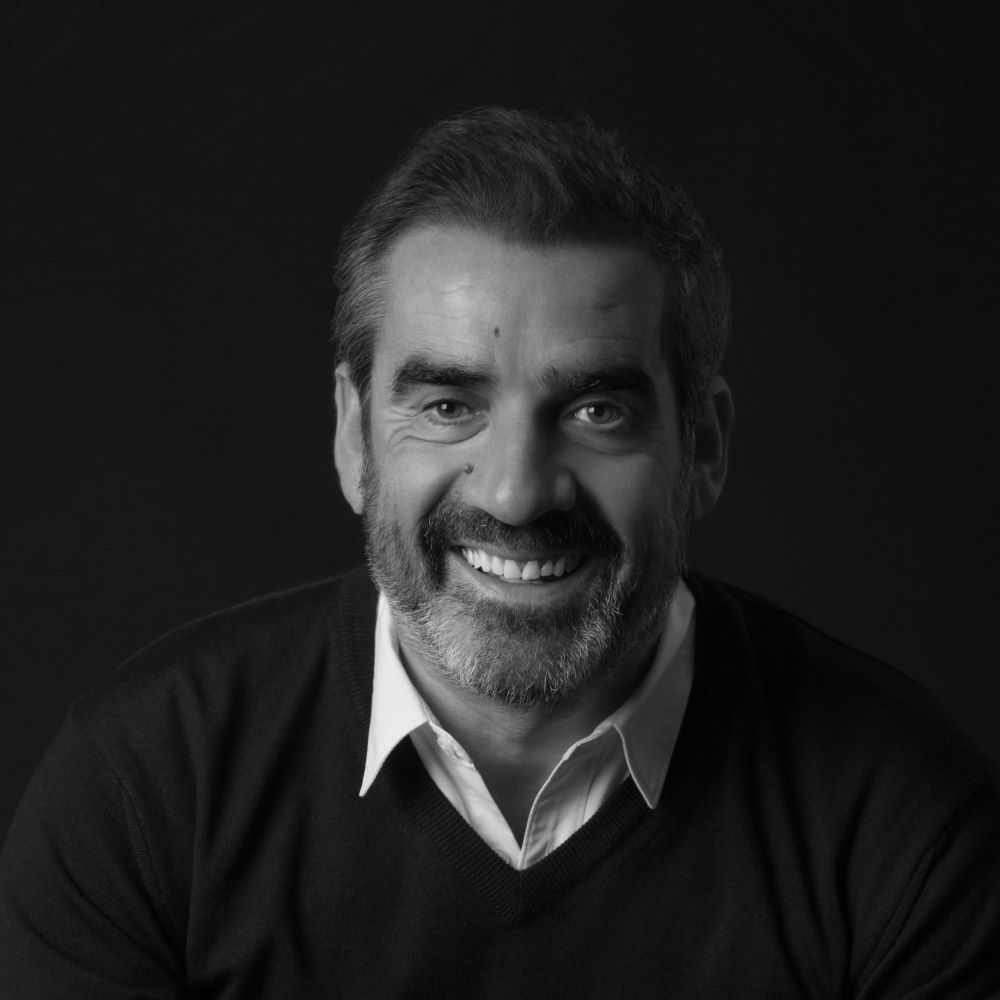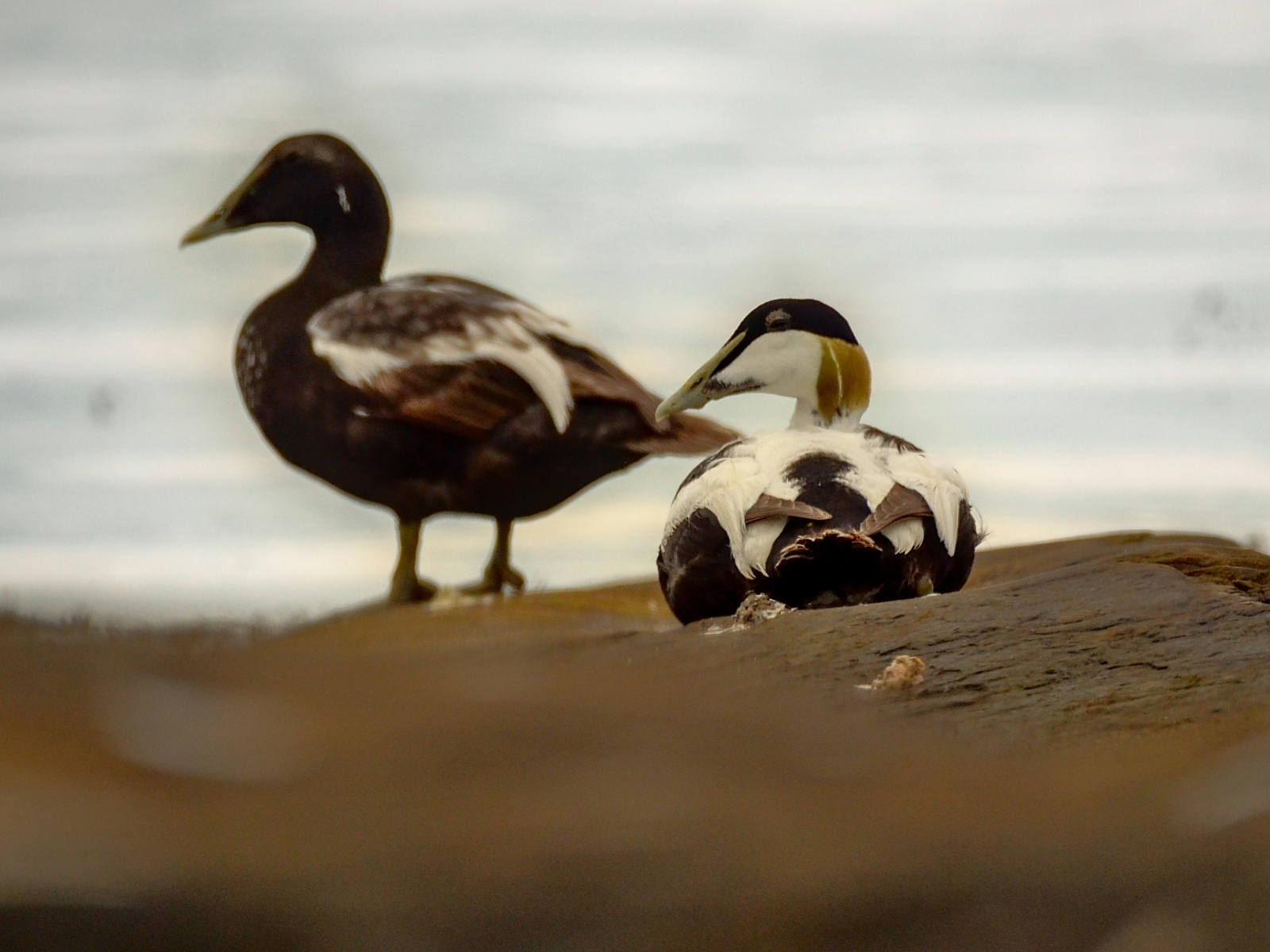The island of Vigur, in the Westfjords region, is home to one of the four hundred 'eider farms' in Iceland that produce nearly 80 per cent of the world's annual eiderdown, equivalent to about four tonnes. On each of these farms, something extraordinary takes place: a quite unique form of mutualism where the eiders, a type of sea duck, find favourable breeding grounds and humans a source of well-being and sustenance.
Every year, around the month of May, colonies of eiders return to the farms to breed, and in June, farmers and their families collect the valuable down with which eiders line the nests. After being dried, cleaned and sanitised, eiderdown is sold, at a high price, to companies that make the warmest, lightest, most elastic and softest pillows, quilts and duvets in the world, which happen to be also the most expensive, costing up to 30,000 euros. All this is done without coercion - eiders are wild and could go and nest elsewhere - nor animal suffering, but with extreme care, respect and commitment on the part of the farmers, and a lot of manual labour.
In Iceland, the practice of collecting and using eiderdown dates back to the settlement of the Vikings on the island in the ninth century. But its commercial development started in the second half of the eighteenth century, when Icelandic farmers and fishers realised that it was more profitable for them to cooperate with eiders and collect their feathers rather than hunt them and consume their eggs. Iceland's first law against hunting eiders was enacted in 1786, and since 1847 eiders have been a protected species. Today, Iceland is home to one of the largest eider populations in the world, estimated at almost one million in the autumn.
A truly mutualistic relationship
Cases of cooperation between wild animals and human beings are extremely rare. At the height of the Inca empire, some two million vicuñas lived on the Andean plateau. Vicuñas were demigods, could not be hunted and only the Inca nobility wore garments made from their wool, collected through an elaborate ritual, the Chaccu, during which large groups of vicuñas were encircled, sheared and then released. With colonisation, vicuñas lost their semi-divine status and became prey for hunting. By the middle of the 20th century, when vicuña fabrics were among the most treasured, the species went almost extinct: fewer than ten thousand vicuñas survived.
To avert the extinction of an animal so significant to the local culture, in 1967 the Peruvian government created the Pampa Galeras National Reserve, covering almost 7,000 hectares in the Lucanas Province, and two years later introduced a ban on trade in vicuña products. The ban became international in 1975, when CITES (the International Convention on Trade in Endangered Species) classified the vicuña as a 'most endangered species' and banned any form of trade in vicuña products. Since then, thanks to the reintroduction of the Chaccu and the involvement of local communities in preservation and wool production, the vicuña population has grown to over two hundred thousand and trade in vicuña products has resumed. As in the case of the eiderdown, the sheared wool is collected, cleaned and processed by hand and is prized, scarse and very expensive.
However, there is a substantial difference between these two renewable materials obtained from wild species. In the case of the vicuña, the relationship with humans is not really mutualistic as it benefits only humans. It also entails coercion, necessary for shearing. In the case of eiders, instead, the relationship is truly mutualistic. Eiders get protection from predators; favourable conditions for laying, incubation and hatching; and in some cases fresh water. Humans get the precious down without significantly disrupting the reproductive process. The down is in fact collected either after the ducklings have left the nest, by repeatedly taking tufts of down or, when hatching is close, by replacing the nest down with abundant hay.
Eiders choose where to nest. In some cases, they go back where they had already nested; in others they lay their eggs where in the past other eiders had their nest; or build a new nest. Generally, nests are well camouflaged and farmers have to comb the terrain through to find them. There is no exploitation. Eiders, in fact, lose their soft feathers naturally to let body heat transfer to the eggs during incubation, and use them to line the nest to insulate it, keep and diffuse heat, and protect the eggs during the rare breaks from hatching, mainly to quench their thirst. Once the eggs have hatched and the ducklings have left the nest, generally after about 24 hours, the nest feathers would anyway scatter around.
The importance of geographical location
It is easier to protect the eider colony on an island like Vigur, which is far enough from the coast to have seagulls and eagles as only predators. It is more complex to protect eider colonies when the farm is on the mainland, where ravens, mink and arctic foxes also prey on nests and ducklings. While on islands protection is mainly about keeping eagles and seagulls away and preventing seagulls from breeding there, on the mainland protection requires more human intervention such as actual patrols by farmers, as well as measures to keep away, capture or eliminate mink and arctic foxes.
As far as creating a safe and convenient environment is concerned, at Vigur a 'eider wall' was even built to provide eiders with niches where they can nest and hatch, sheltered from wind, rain and seagulls. In 1830, the 'eider wall' earned its inventor, Kristjan Gudmudsson, a prestigious award for innovation in agriculture from the King of Denmark. Other farms provide shelters made of stone and wood or old tyres to house nests.
In terms of volume, eiderdown production is certainly niche compared to the huge production of farmed duck and goose down. About 270,000 tonnes per year of farmed down are obtained by plucking the animals more often when dead but, in some geographies, also up to four times when alive. Nevertheless, eiderdown shows that it is possible to produce natural, durable and renewable material through collaboration between species with full respect for the living and full recognition by the market.
This article is also available in Italian / Questo articolo è disponibile anche in italiano
Cover image: Anna Storsul, Unsplash



